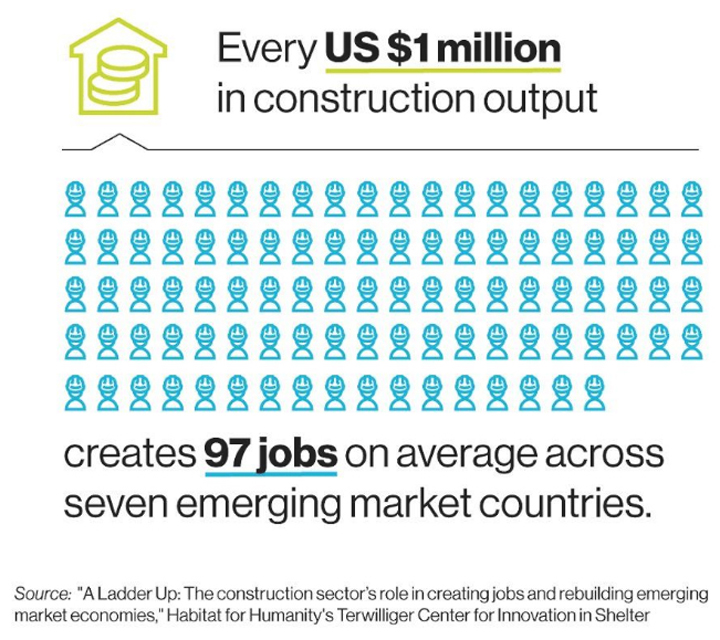
EVERY $1 million worth of investment in housing construction creates 165 jobs in the Philippines, according to a study commissioned by Habitat for Humanity’s Terwilliger Center for Innovation in Shelter.
The report, titled, “A Ladder UP: The construction sector’s role in creating jobs and rebuilding emerging market economies,” found that an investment of $1 million in housing construction creates an average of 97 jobs in emerging markets.
The study was done by economists at the University of Pennsylvania, the University of Southern California, and the University of Washington. The report focused on 9 countries: the Philippines, Brazil, Colombia, India, Indonesia, Mexico, Peru, South Africa and Uganda.
“Investment in residential construction represents a potential win-win-win in emerging markets because it creates such a large number of jobs locally, helps close stubborn gaps in affordable housing and stimulates the larger economy,” Patrick Kelley, vice president of Habitat’s Terwilliger Center, said.
“These findings are critically important for low- and middle-income countries deciding what areas to prioritize as they work to build back economies weakened by the Covid-19 pandemic, particularly in a world where 1.6 billion people still lack adequate shelter,” he added.
The report stated that housing construction’s output multiplier in the Philippines is 2.2 while its employment multiplier is 1.4.
The direct employment effect of the housing construction is 119 jobs for every million-dollar investment, while indirect employment effect is 45 jobs per million-dollar investment. Data showed that nearly half or 43.9 percent of workers in the construction sector completed secondary schooling; 26.5 percent completed primary education; and 15 percent’s education is less than primary school level. Only 14.1 percent had degrees.
Majority of workers at 62.2 percent are wage/salary workers while 33.6 percent were self-employed. Around 4.2 percent, however, were unpaid workers.
In the Philippines, the report said, there are 2.579 million construction workers who represent 6.6 percent of the country’s workforce.
Almost all or 97.6 percent of these workers are male and the average age is 37.1 years old. There are only 62,000 females working in the construction sector.
“Overall, the evidence points to strong economic spillovers from the construction industry through backward and forward linkages with other industries and large employment effects both directly and indirectly,” the report stated.
“In addition, available estimates for the residential building construction sector are similar, and often somewhat higher than those for non-residential building or other construction sectors,” it added.
Habitat said the report provides evidence that many of those jobs go to workers with lower levels of formal education. These are relatively well-paying jobs compared to other employment options for workers with limited educational attainment, the researchers found.
Residential construction dominates the sector, the report found. In Brazil, Colombia, and Mexico, for example, residential construction accounts for more than 80 percent of total building construction.
The researchers also concluded that measures to improve the working conditions and on-the-job training of construction workers can help urban areas—including those hit hard by the pandemic— develop in a more sustainable, equitable way.

